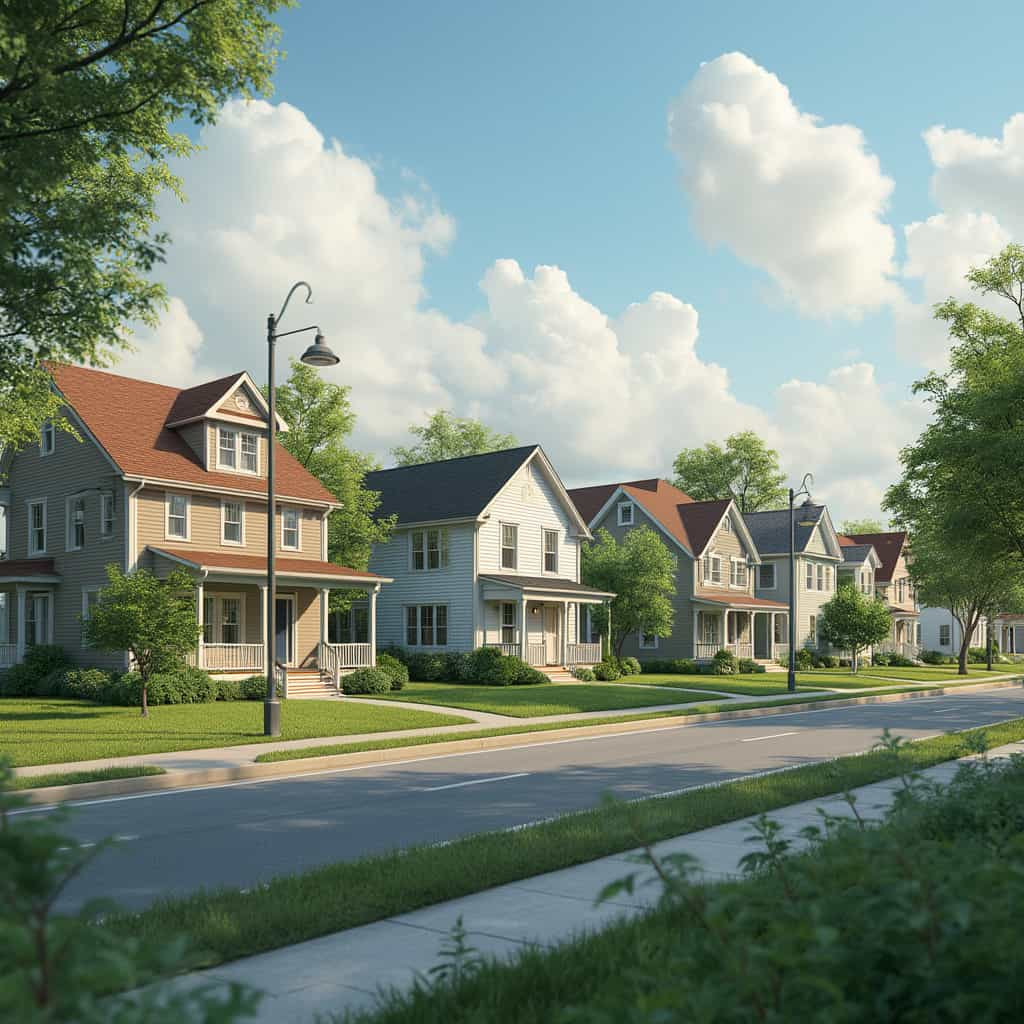In recent years, the allure of suburban living has grown significantly, fueled by the quest for tranquility, space, and a sense of community. As urban areas become increasingly congested, many are looking to the suburbs not only for personal expansion but also as a strategically sound investment. This trend has led to a burgeoning interest in purchasing independent houses situated on the outskirts of crowded cities.
The primary appeal of an independent suburban house lies in its potential to offer space—both indoor and outdoor—that urban properties lack. These homes provide the opportunity for gardens, sprawling backyards, and privacy, elements that are often considered luxuries in densely populated urban centers. Furthermore, suburban homes often come with the added benefit of being situated in safer, quieter neighborhoods, which are ideal for families seeking a conducive environment to raise children.
However, the decision to purchase such a property is not without its complexities. The cost factor is a significant consideration, with suburban house prices varying widely based on location, size, and amenities. On average, an independent house in a suburban area might be priced between $250,000 to $500,000, though this can leap to over a million in more affluent areas. Still, these prices are usually lower compared to similar properties in the heart of the city, where space is at a premium.
When considering purchasing a home in the suburbs, buyers typically encounter a plethora of options ranging from brand new developments to charming older homes rich with history and character. New constructions often come with the allure of modern designs, energy efficiency, and less immediate maintenance costs. They might, however, lack the established charm and developed landscaping of older homes. Older homes, while perhaps more affordable, may require extensive renovations and updates which can add additional costs and delays.
In assessing these options, prospective buyers might weigh the cost of renovations against the price differentials of properties. For example, a new home in a developing suburb might offer better value in terms of cost per square foot compared to a vintage home that requires significant investment in restoration. Thus, while charming older homes may be appealing for their architectural details, modern homes can offer long-term financial benefits in savings on utility and repair bills.
Historically, the move to the suburbs in the mid-20th century was driven by the post-war economic boom and a desire for a slice of the American dream—a standalone house with a yard. This sentiment persists today, with many viewing suburban homes as a haven from the hustle and bustle of city life. Yet, accessibility remains a critical issue, particularly for those commuting to the city for work. While many suburbs have developed robust transportation networks, such as commuter trains and buses, some areas still require long drives or transfers, complicating daily commutes.
Moreover, potential buyers should also consider the impact of local taxes and the anticipation of future developments in the area. Suburban homes may come with higher property taxes, which contribute to local infrastructures such as schools and roads but could strain household budgets. Future developments can also affect property values and livability. For instance, the construction of new shopping centers, schools, or public parks can enhance an area’s desirability, while overdevelopment might lead to congestion and increased noise, altering the suburban idyll buyers initially sought.
In terms of market strategies, prospective buyers are advised to scrutinize the terms of mortgage offers and impending interest rate shifts. Engaging a reliable real estate agent with a keen understanding of the suburban landscape can provide valuable insights and negotiation leverage. Buyers might also explore government programs aimed at first-time homebuyers, which can provide financial incentives or grants that make purchasing more affordable.
Real estate experts emphasize that while suburbs typically promise more space and quieter environments, the specific choice depends largely on the buyer’s individual needs, such as proximity to work, schools, and community preferences. They recommend that buyers visit potential neighborhoods at different times of day to gauge traffic conditions, noise levels, and the general atmosphere.
Finally, every real estate transaction should be treated as a careful investment, particularly when considering the long-term potential for appreciation. The decision to buy a house in the suburbs should weigh immediate desires for space and tranquility against broader economic factors. It is essential to perform due diligence, studying both the micro and macro influences on property values, alongside consultations with knowledgeable market insiders to prepare for a rewarding suburban home purchase.
You may also like
Guide to Buy an Apartment in the City Center
Purchasing an apartment in the city center is a complex process filled with opportunities and challenges. This article explores various proposals and costs, and provides a detailed comparison of the most attractive options available in today’s real estate market.
Buy of Electric and Hybrid Cars: Charging durations, vehicle maintenance and extended warranties
With the rise in popularity of electric and hybrid vehicles, understanding the nuances of purchasing these eco-friendly cars is crucial. This detailed guide explores charging durations, vehicle maintenance, extended warranties, and regional purchase trends. It also compares various models and offers insights from experts in the field.
Buy of Diesel and Petrol Cars: Comparing offerings from different regions and operators
As the automotive landscape evolves, buying a diesel or petrol car requires careful consideration. This article explores the options, histories, and warranties involved in purchasing such vehicles. It addresses potential issues and how to ensure a safe purchase, while comparing offerings from different regions and operators.
Motorcycle Purchase Guide: Insider Tips and Market Insights
This comprehensive guide explores the nuances of purchasing motorcycles, offering insights into various aspects such as motorcycle conditions, service history, warranties, and more, while also making regional comparisons and suggesting reliable sources for potential buyers.
